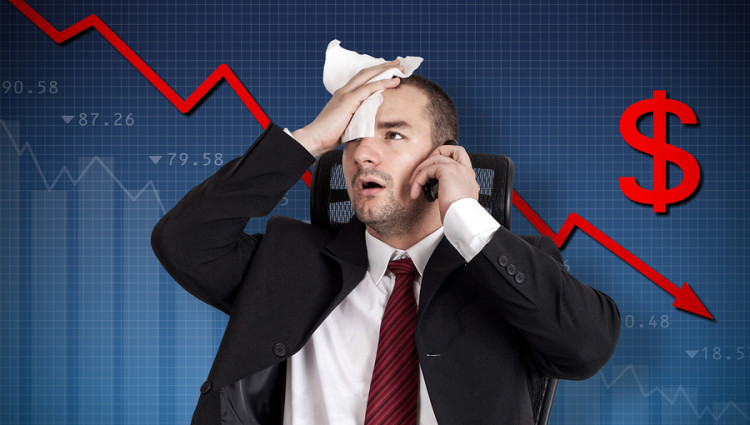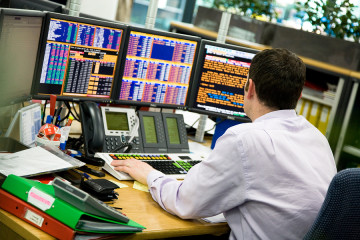What do economic crises teach us?

by Giorgi Mikhelidze December 1, 2020
Many crises have a common phenomenon – overheated asset. When a certain value causes a stir in demand, it is sold much more expensive than its real value. When the price approaches a figure that is unacceptable to potential buyers, the market hits the price. There are fewer people who want to buy an asset, sellers lower the bar, but it does not help. Panic sale replaces the hype demand. This continues until the price bounces off the bottom and goes up, but is no longer at this rate.
In turbulent markets, you can earn, but the risk of losing everything is much higher. In this article, we will tell you how it happens in the example of several crises.
Tulipmania in the Netherlands
This is the first well-documented economic crisis. The story is simple: among the usual tulips began to appear unusual flowers with mottled petals.
Rare bulbs turned into a profitable asset: the price of one many times exceeded the annual earnings of the artisan. Among the buyers were flower growers, professionals, art collectors, investors who planned to earn money on flowers.
It is obvious that tulips do not grow in winter. Then enterprising flower growers began to sell the crop, which was just going to grow in the season. There was a deal with such conditions: the seller promised to deliver the goods by the spring, and the buyer undertook to buy the goods. The price was determined before delivery, at the time of the transaction.
This commitment, signed by the parties, could be traded no less successfully than the tulips themselves. Prices for such paper actively fueled by rumors of speculators and promises that soon everyone will be interested in the flower and prices will rise many times.
This is how futures trading works: the investor buys not an asset, but an obligation to buy or sell it in the future, but at the current market price. It was during the tulip crisis that futures trading became a phenomenon.
Two years later, when the psychological bottom was passed, the market grew again, although not until the indicators of 1636 Tulips began to sell at a fair market price, without the hype of demand and panic sales. Then the price of tulips gradually decreased, no longer causing catastrophic consequences for bidders.
Sick, but once valuable tulips in a few generations died out. And history got the first detailed documented stock market bubble. The names of those who made fortunes on speculations with tulips have not reached our days. However, the conclusion begs itself: earned those who were able to stop in time and leave the game just at the moment when the price of bulbs and futures was growing or was already as high as possible. Tulip dealers were lucky: they managed to sell the overheated asset before the market collapse.
Some even compare such crises with the gambling industry. Like there is difficult and practically impossible to come up with a working strategy in keno or roulette, it is also very hard to predict any crisis that will take place in the future.
Black Thursday
Economists still argue about the causes of this crisis. However, the collapse of the exchanges that preceded it, developed under the same laws as the tulip crisis in Holland.
In the 1920s, the U.S. economy experienced an economic boom after World War I, with production and market capitalization growing. Government policy encouraged big business, actively formed consumer society. At the same time, loans were cheaper, allowing low-income citizens to receive large sums. This led to the fact that a lot of Americans began to speculatively trade securities.
Demand for shares raised prices, rising prices attracted new investors, prices rose again, and more investors were involved in speculative trading. Shares were bought much more expensive than their fair market price, often on credit. Then margin loans, which are used to this day, became widespread: the investor attracted leverage for trading. This allowed operating in sums several times greater than equity. Profits from transactions with such a tool increases, but the risks grow: in unprofitable transactions settlements with the lender can destroy all the capital of the investor in one or two transactions.
The stock market lost about 40% of its capitalization, or $30 billion.
With Black Thursday, the Great Depression began, an economic shock that the United States, and then the world, experienced for several years. After this crisis, in 1932 in the United States there was a Securities and Exchange Commission (SEC), designed to prevent a repeat of the stock market collapse. The regulator monitors the issuance and circulation of securities, does not allow to make transactions that will significantly affect the level of prices, and does not allow abuses in the market. Now there is such a body in every country where there is at least one exchange.
Black Monday
On October 19, 1987, for no apparent reason, the Dow Jones Index, the value of the 30 largest U.S. companies, fell. And that’s after a rapid growth for several years. The chain reaction spread across the globe, with Australia’s stock exchanges losing 41.8 percent, Hong Kong stock exchanges 45.8 percent, Canadian exchanges 22.5 percent, and the UK falling 26.4 percent. Interestingly, the global financial crisis was saved by the low power of computers. Transactions took place in automatic mode, they were executed by stock terminals. When trying a panic sale, the systems simply depended on the number of applications and slowed down the collapse of prices.
Versions of what happened are still being discussed. One of the main ones is the automation of the exchange. Applications were submitted by robots and executed by the same, which led to too many operations and system hovering.
Despite the shock fall in indices, stock markets recovered relatively quickly – in a couple of years, and the real economy almost did not get hurt.
The main lesson learned then by stock regulators is that trades should be suspended if the market is too loose. What a computer glitch made in 1987 is now part of the exchange practice. If there is a rush of demand or a sharp sale, the trades stop for a few minutes. This does not allow the securities to significantly change their value.
Conclusion
It is difficult to predict precisely when the crisis will start. The situation may heat up for several years and even look quite prosperous, as it was on the eve of Black Thursday, but the collapse will happen unexpectedly. The market is a lively and self-regulating system whose behavior is not always predictable. In addition to the readiness to meet the crisis, not with empty pockets, it is important to understand the theory. If you know how the market, exchange, tools work, you can protect yourself from unreasonable actions. Most mistakes in a crisis are made by untrained investors who trust their intuition, rather than proven strategies.
https://money.cnn.com/2017/10/19/investing/romans-numeral-black-monday/index.html







No Comment